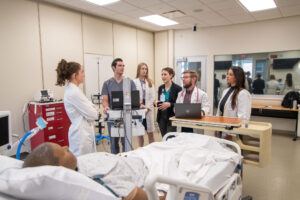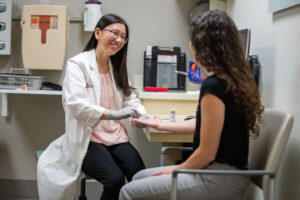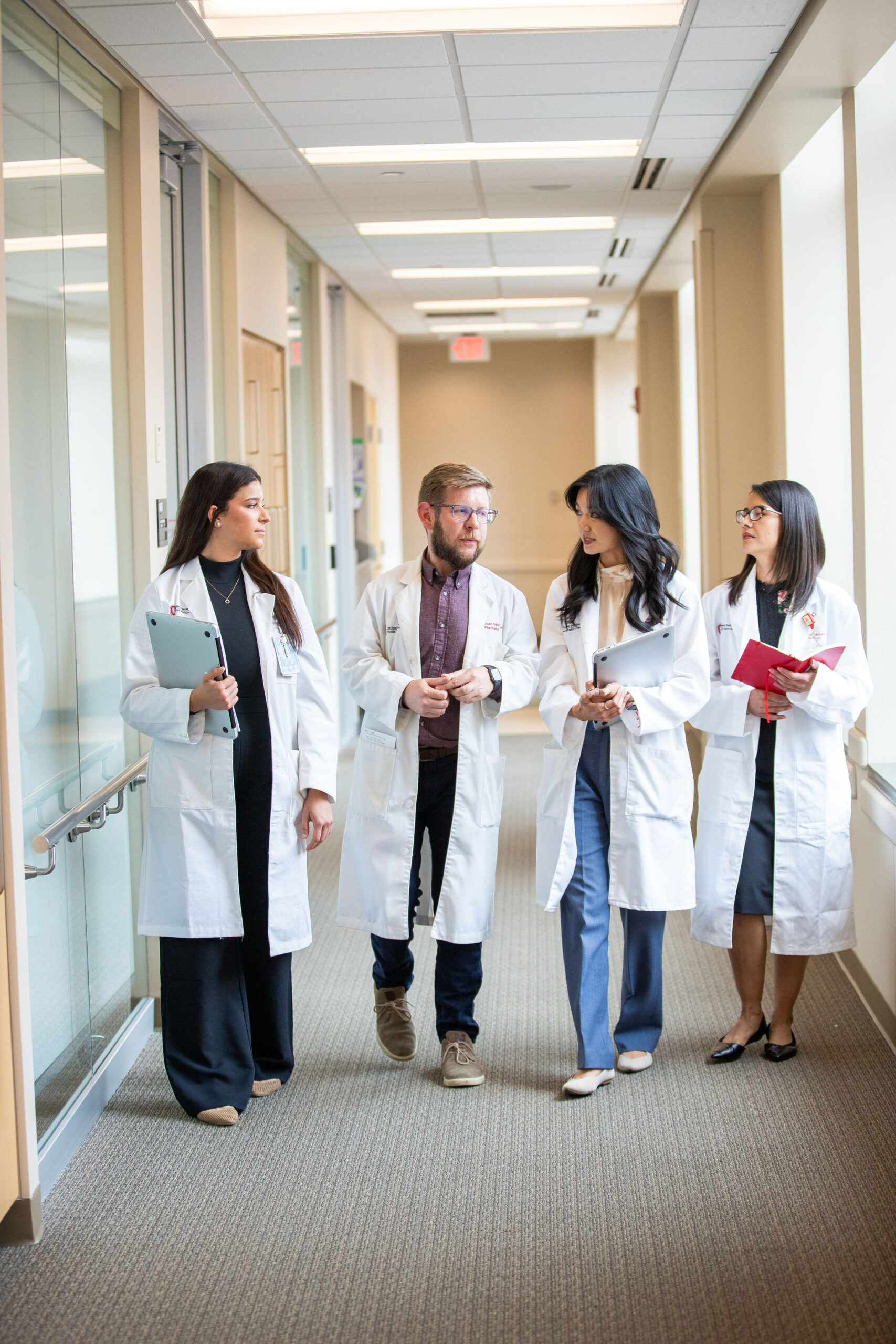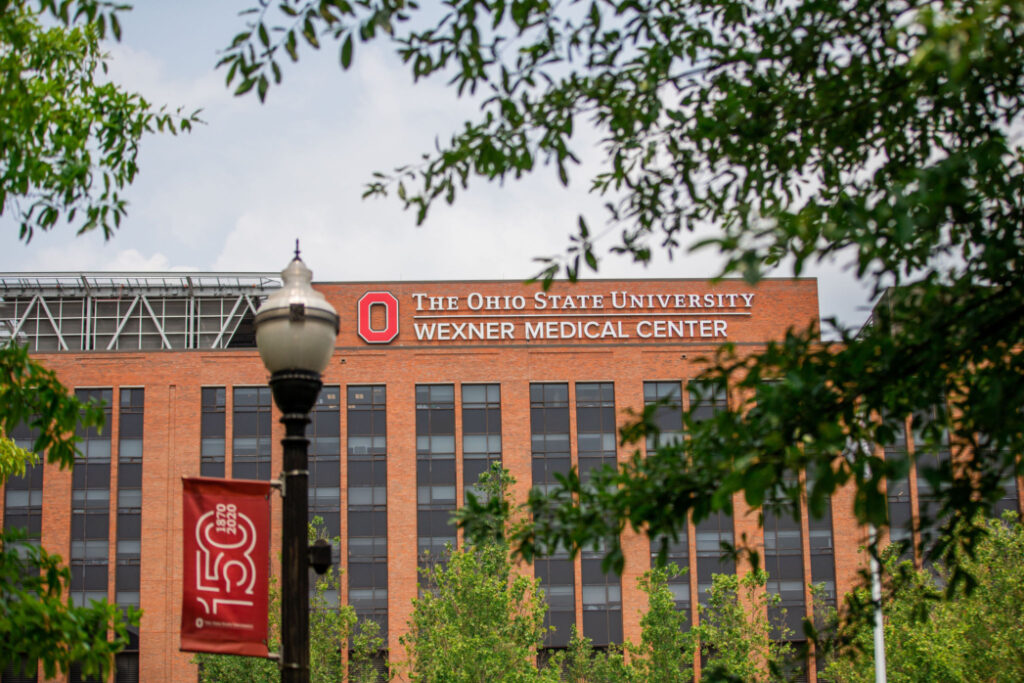Residency Program Director
-

Andrew Stone, PharmD, BCPS
- Specialty Practice Pharmacist-Inpatient Medical Oncology
- PGY1/PGY2 Pharmacotherapy Residency Program Director
- PGY2 Pharmacotherapy Residency, OSU Wexner Medical Center
- PGY1 Pharmacy Residency, OSU Wexner Medical Center
- PharmD, Wayne State University Eugene Applebaum College of Pharmacy and Health Sciences
Previous Residents
-
Hunter Patton, PharmD, BCPS
Specialty Practice Pharmacist-Inpatient Medical Oncology, The James Cancer Hospital at The Ohio State University Wexner Medical Center -
Andrew Stone, PharmD, BCPS
Specialty Practice Pharmacist-Inpatient Medical Oncology, The James Cancer Hospital at The Ohio State University Wexner Medical Center
RESIDENCY SITES
As one of America’s top ranked academic medical centers, the mission of The Ohio State University Wexner Medical Center (OSUWMC) is to improve people’s lives through innovation in res earch, education, and patient care.
earch, education, and patient care.
OSUWMC is a 1,506 bed multihospital delivery system recognized in 2018 as one of “America’s Best Hospitals” for excellence in ten specialties by US News and World Report based on quality, outcomes, and reputation.
More about the sites
University Hospital (UH)
University Hospital (UH) is our flagship hospital with over 900 beds. UH is a major referral center for patients throughout Ohio and the Midwest, and is one of the busiest kidney and pancreas transplant centers in the world. UH is also an international center for neuromodulation research and neurological care. In addition, UH is a level 1 trauma center in addition to being the American Burn Associated verified adult burn center for the region
The James Cancer Hospital and Solove Research Institute
The OSUCCC – James strives to create a cancer-free world by integrating scientific research with excellence in education and patient-centered care — a strategy that leads to better methods of prevention, detection and treatment. Ohio State is one of 51 National Cancer Institute (NCI)-designated Comprehensive Cancer Centers and one of only a few centers funded by the NCI to conduct both phase I and phase II clinical trials on novel anticancer drugs sponsored by the NCI. As the cancer program’s 356-bed adult patient-care component, The James is one of the top cancer hospitals in the nation as ranked by U.S. News & World Report and has achieved Magnet® designation, the highest honor an organization can receive for quality patient care and professional nursing practice. With 21 floors and more than 1.1 million square feet, The James is a transformational facility that fosters collaboration and integration of cancer research and clinical cancer care.
The Ross Heart Hospital
The Ross Heart Hospital is a leader in cardiology and heart surgery and is the only nationally ranked heart hospital in the area. Each floor of the 150-bed hospital is dedicated to a specific service, which helps us provide specialized care for every patient. The Ross is one of the largest centers for the implantation of LVAD devices in the world in addition to providing heart and lung transplants.
University Hospitals East (UHE)
University Hospitals East (UHE) blends the friendly atmosphere of a community hospital with the advantages of being a part of a major academic medical center. Located on the eastern edge of downtown Columbus, University Hospital East offers renowned Ohio State services in orthopedic care, emergency services, cancer care, addiction services, ear, nose and throat care, heart care, radiology and imaging services, rehabilitation and wound healing. University Hospital East has a 19 bed mixed medical/surgical ICU.
The Brain and Spine Hospital
The Brain and Spine Hospital opened in the Fall of 2016 and is a state-of-the-art facility for the advanced management, care and healing of patients with neurological disorders.The hospital consists of 87 private beds and specialized units for stroke and neurovascular, neurotrauma, epilipsy, spine, chronic pain, neuromodulaton, multiple sclerosis, congnitive and movement disorders, as well as an innovative new model for acute spinal cord injuries.
The Department of Pharmacy
The Department of Pharmacy at The OSUWMC is one of the largest in the country. With over 400 employees, and a practice model that includes both clinical pharmacy generalists and clinical pharmacy specialists, our goal is the provision of outstanding, state of the art care. We advise our staff on the best use of medications, develop safeguards for our patients to prevent medication errors and develop transformative pharmacy practice in health-systems. We are guided in this mission by our strategic plan that focuses on five key priorities: optimizing our pharmacy information system, refining our practice model, enhancing our medication safety program, establishing the pharmacy as a workplace of choice in Central Ohio and refining our academic relationships and department scholarship.
Training future generations of pharmacists is a vital part of our mission. Our pharmacists serve as preceptors for our residency programs while providing experiential training for Doctor of Pharmacy (PharmD) students. Our residency program has a 55-year tradition of excellence with our graduates being well-prepared to work at a high-level in a wide-variety of institutional and ambulatory patient care facilities.
The Department of Pharmacy, in partnership with the OSU College of Pharmacy, strives to develop the skills of our residents and provide a residency program that is recognized nationally for the quality and excellence of its graduates.
KEY ROTATIONS / EXPERIENCES
Direct Patient Care:
Direct patient care is the backbone of this residency experience. During the PGY1 year, the resident will complete 6 weeks of orientation. Rotations required during PGY1 year include:
during PGY1 year include:
- Administration
- Ambulatory Care
- Internal Medicine
- Medical ICU
- Oncology
During the PGY2 year, the resident will be orientated and complete the following required rotations:
- Ambulatory Care (longitudinal)
- Cardiology
- Community ICU
- Community Internal Medicine
- Emergency Medicine
- Hematology
- Infectious Disease
- Pediatrics
- Solid Organ Transplantation
These rotations will count towards the PGY2 Pharmacotherapy certificate; however, these rotations can be completed or started during the PGY1 year based on scheduling availability. During both years, there are opportunities for elective rotations. Potential electives include (but are not limited to) the areas of academia, acute care surgery/trauma/nutrition support, APPE precepting, clinical education, hepatology, inpatient oncology with IM focus, NCCU, pain and palliative medicine, psychiatry, and SICU. The program is flexible and can be customized, at the discretion of the Director, to target the resident’s interests and goals.
Quality Improvement Projects:
A formulary management and a medication use evaluation will be completed during the first year of residency. During the second year, a quality improvement project will be conducted.
Research:
Residents are expected to complete a longitudinal major research project. Opportunities exist for research presentations at a variety of national conferences. A project manuscript will be developed suitable for publication in a peer-reviewed journal.
Teaching:
The resident will participate in the education of PharmD students enrolled at The Ohio State University through an IPPE precepting experience during each residency year. The resident will deliver a Grand Rounds presentation for continuing education during both years of the program. The resident will complete a formal teaching and learning training program through the College of Pharmacy. There are also opportunities for layered learning with and through precepting for APPE students and PGY1 residents based on timing and resident interest
Service:
The resident will be assigned to participate in a P&T Subcommittee, Medication Safety team, and additional committee work as needed.
Additional Experiences:
The resident will participate in a clinical on-call program during PGY1 and volunteer at the Columbus Free Clinic during both years.
KEY PRECEPTORS
The PGY1 Pharmacy/PGY2 Pharmacotherapy residency program provides a unique opportunity for exposure to highly trained preceptors in many practice areas. Residents may choose rotations in a variety of areas. Preceptors that will consistently interact with the resident are:
Megan Bond, PharmD, BCPS
Internal Medicine with focus in nephrology
Emily Buatois, PharmD, BCPS
Internal Medicine with focus in academia
Joshua Gaborcik, PharmD, BCPS
Internal Medicine with focus in endocrinology
Laura Mudd, PharmD, BCCCP
Internal Medicine with focus in pulmonology, PAH, & cystic fibrosis
Hunter Patton, PharmD, BCPS
Internal Medicine with focus in oncology
Julie Rose, PharmD, BCPS
Internal Medicine with focus in community hospital clinical care
Megan Smetana, PharmD, BCPS, BCTXP
Internal Medicine with focus in solid organ transplant & hepatology
Andrew Stone, PharmD, BCPS
Internal Medicine with focus in oncology
BENEFITS AND ADDITIONAL REQUIREMENTS
Application Deadline:
January 2, 2025
We welcome applications from non-U.S. citizens who have a “green card” (permanent resident status) or a current visa valid through the entire duration of the residency program. The Ohio State University pharmacy residency programs are NOT able to sponsor visas for pharmacy residents (PGY1 or PGY2).
Required Supplemental Material:
- Supplemental Application
- Along with your application, we require three letters of recommendation. It is highly recommended that one to two of the letters be from a clinical rotation within the past six months.
Start Date: June 2025
Annual Salary:
PGY1 $55,000
PGY2 $56,000
Vacation Days: 10 days
Completion of a Major Research Project


